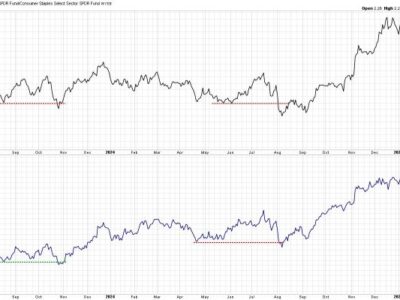
Federal and state governments paid over $60 billion for nursing home care through the Medicaid program in 2019. While nursing home care is costly, its quality varies and can often be quite poor. Through policy change, it should be possible to both improve outcomes for seniors and disabled individuals who require long‐term care, while reducing the cost to taxpayers.
According to a MACPAC analysis, Medicaid paid an average of $244 per resident per day for nursing facility care in 2019. For patients that must reside in a nursing home permanently, this works out to over $89,000 per year. It does not include costs for therapy and other ancillary services, nor does it include the patient’s share of nursing home fees which are deducted from their Social Security benefits and other source of income.
But the high cost of Medicaid‐funded nursing home stays does not guarantee comfortable, compassionate care for vulnerable residents. Indeed, nursing homes often neglect or mistreat residents, while retaining government funding.
For example, an Oswego, NY facility retained its certification, and thus its ability to receive Medicaid reimbursements, despite allowing a repeat sex offender to abuse a resident, failing to call 911 during patient medical emergencies, not fixing a leaky roof, and maintaining unsanitary conditions. The facility was eventually placed on a Centers for Medicare & Medicaid Services (CMS) watchlist, but remained eligible to accept new Medicaid patients.
An El Cajon, CA facility placed a 90‐year‐old resident in the same room with a severely mentally ill individual who then strangled the elderly man to death. The facility continues to operate despite instances of sexual and physical abuse by staff and additional deaths related to staff neglect.
And these cases do not appear to be isolated. According to data collected by ProPublica, 30% or more of certified nursing homes in fifteen states have severe deficiencies identified by regulators. And, of course, COVID deaths were widespread in the nursing home industry due to poor infection control practices.
Varying Costs and Opportunities for Savings
While high on average, the cost of nursing home care varies widely across the country. It is especially expensive in Alaska and Hawaii, where interstate competition is necessarily limited. But in the continental US, states with relatively high nursing home costs are adjacent to states with much lower costs. In 2021, the average cost of a shared room in North Dakota was $394, but it was only $234 in South Dakota. Other state pairs with large contrasts were Minnesota ($381) and Wisconsin ($297), and West Virginia ($382) and Kentucky ($236).
This pattern suggests that states could save money by placing residents in out‐of‐state nursing homes. Remote placements should require the beneficiary’s informed consent (not possible for those suffering from advanced dementia) and perhaps some financial incentive.
One objection to out‐of‐state placements is that friends and family would have to travel further to visit residents. But one older government study found that 60% of nursing home residents do not receive visitors. A large proportion of residents in nursing homes did not have children, while, in other cases, their children may have pre‐deceased them or become estranged.
Some prospective nursing home residents without family ties may even prefer facilities outside the US which may not only be far less costly but would also provide residents with a higher standard of care. Facilities in Mexico, for example, can take advantage of lower personnel and real estate costs. It has already become common for Americans to retire to Mexico and obtain medical services there. The country also has assisted living facilities, some of which provide a continuum of care up to and including nursing facilities. One challenge of housing Medicaid beneficiaries in Mexico is that Medicare coverage is not available outside the United States.
Savings Without Relocation
An alternative to nursing homes, common in California, is the “board and care home”. As explained on the website A Place for Mom:
Board and care homes are houses in residential neighborhoods that are equipped and staffed to care for a small number of residents, usually between two and 10. These homes provide comparable care to what’s offered at assisted living communities, but it’s usually less than what a nursing home provides. This means board and care homes can help with daily routines but typically don’t provide 24‐hour skilled nursing assistance.
Nurses also visit board and care homes to provide more specialized services. So, for most individuals that might otherwise reside in a nursing facility, a board and care home is a viable, lower‐cost option. These facilities operate with lower overheads and do not have to pay on‐site registered nurses or physicians. Because the setting is in a home rather than a large institution, both residents and visitors may find the prospect of an extended stay less upsetting.
In most of the US, this type of facility is either unavailable or ineligible for Medicaid reimbursement. But California has obtained an Assisted Living Waiver (ALW) from the Center for Medicare and Medicaid Services (CMS) to include some of these facilities in Medi‐Cal, the state’s Medicaid program. Although not available everywhere in California, ALW is offered in most of the state’s high‐population counties.
Under the waiver, Medi‐Cal can compensate board and care homes for services they provide patients aside from the cost of the room and meals, which are instead funded by the resident’s social security benefits. Medi‐Cal covered services include assisting residents perform Activities of Daily Living (ADLs) such as “bathing or showering, dressing, getting in and out of bed or a chair, walking, using the toilet, and eating.” Depending on the level of assistance residents need, the state’s daily reimbursement rates range from $89 to $250. By contrast, Medi‐Cal skilled nursing facility reimbursement rates averaged $283 last year.
Although the ALW appears to be unique to California, it is part of a larger CMS waiver program called Home and Community‐Based Services (HCBS) which funds various nursing home alternatives in sixteen states.
US nursing homes are often quite expensive and do not necessarily provide a high level of service. Alternative facilities, whether located nearby, in another state, or even over the border, may be able to provide a higher quality of life for those needing long‐term care at a lower cost.








